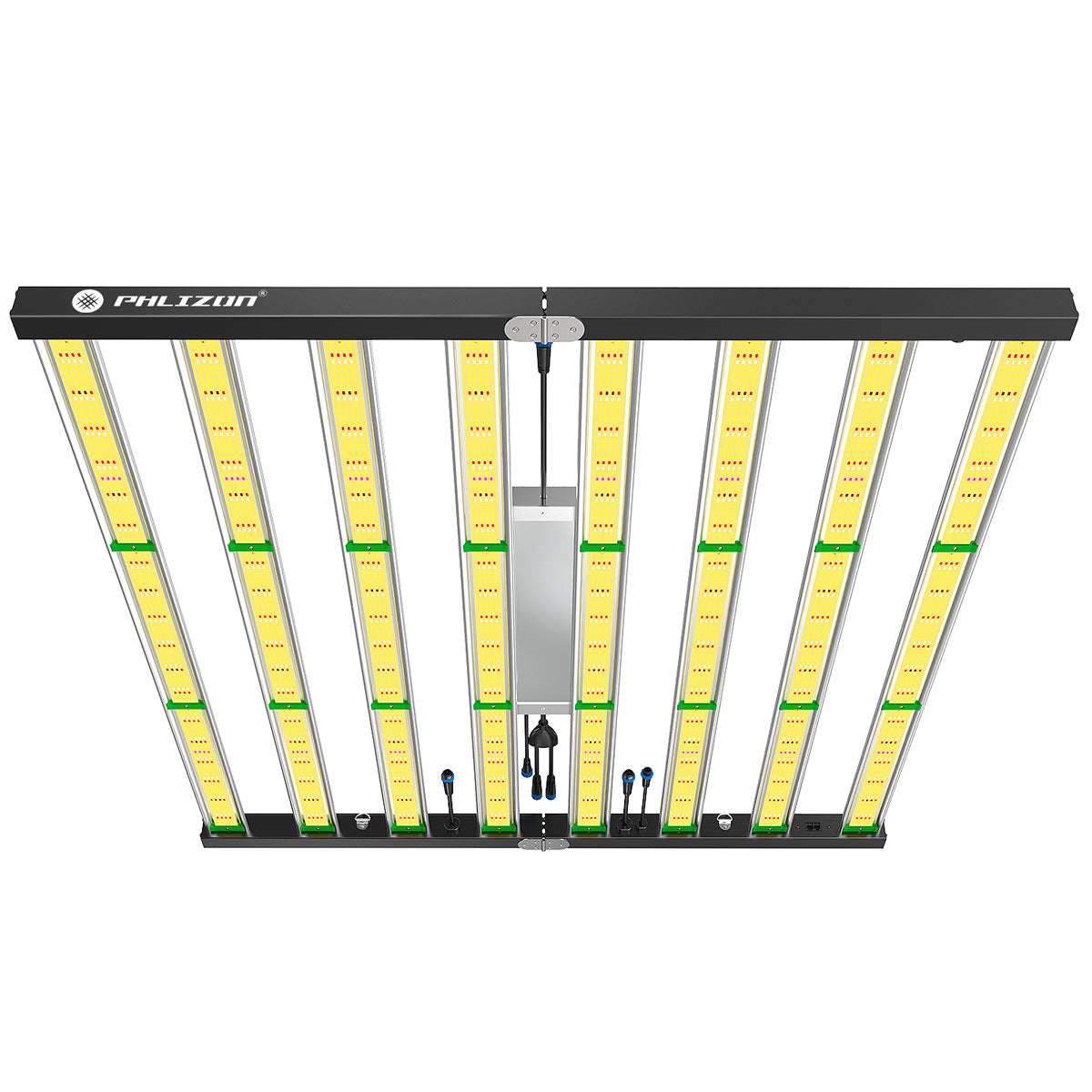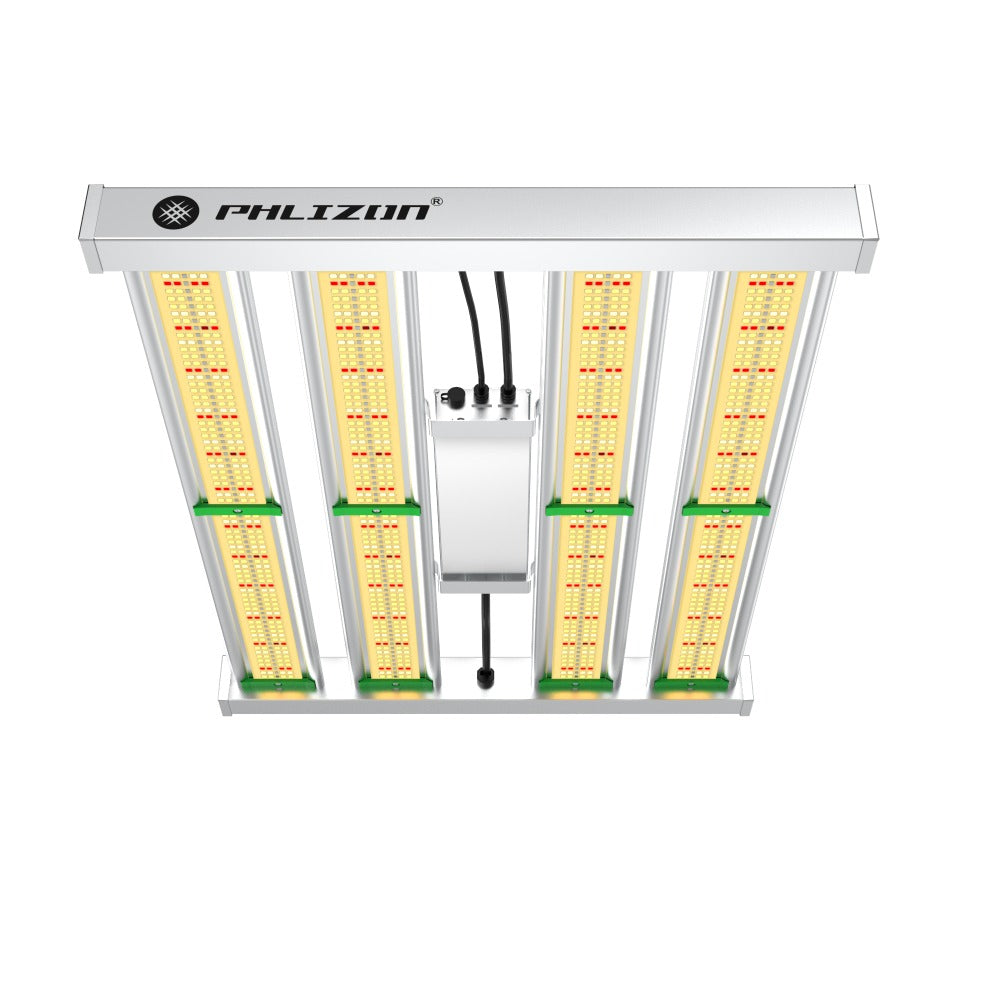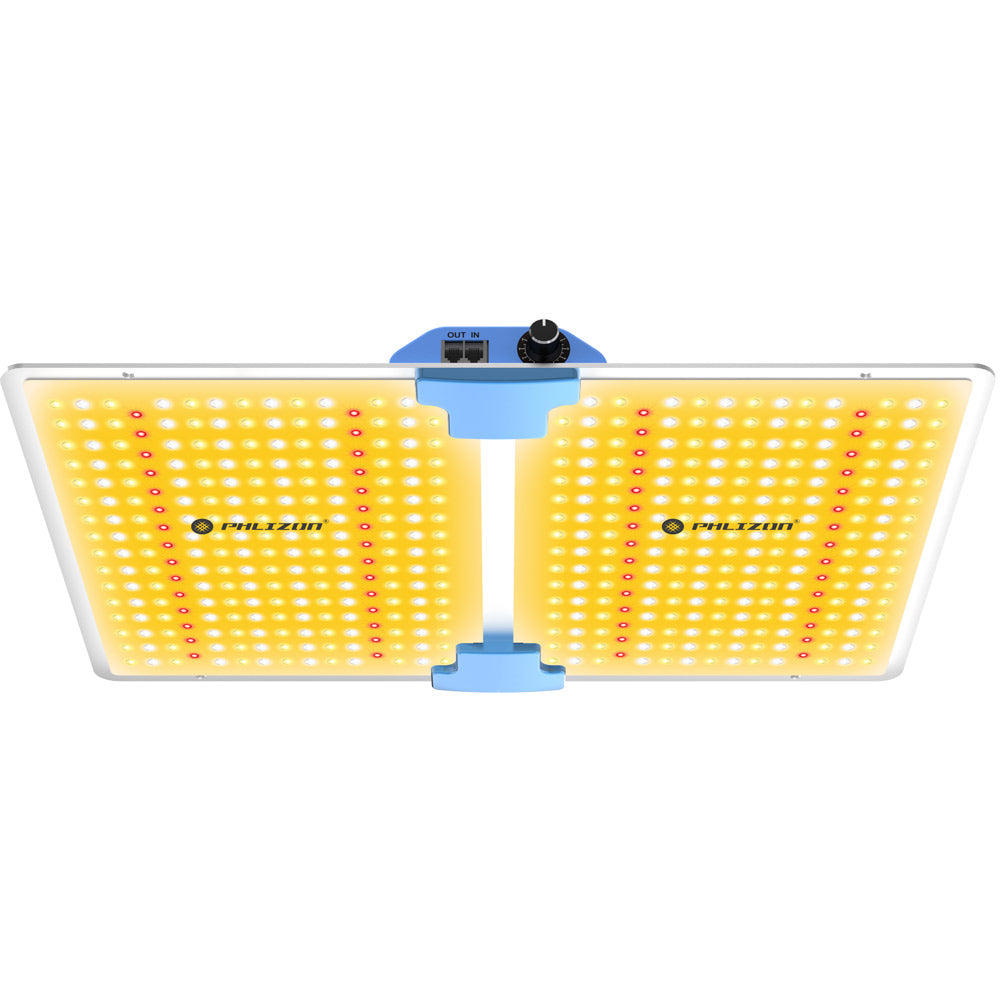Menu
Know About the Lighting Uniformity for Indoor Growth
The LED grow light uniformity for plants is a crucial aspect to consider for optimizing plant growth and ensuring consistent yields. Uniformity refers to the even distribution of light intensity across the entire canopy of plants. This is a critical factor as it directly influences plant growth, photosynthesis efficiency, and overall crop production.
The LED grow light uniformity for plants is an essential factor in ensuring optimal growth and development. To achieve this, the following inputs should be considered:
1. Light Spectrum: The LED grow light should provide a balanced spectrum of light to cater to the specific needs of plants during different growth stages. Incorporating wavelengths ranging from blue (400-500nm) to red (600-700nm) promotes photosynthesis, chlorophyll production, and flowering.
2. Light Intensity: The intensity of the LED grow light should be uniform across the entire coverage area to ensure consistent growth. Plants require different light intensities during various growth stages; hence, the light output should be adjustable accordingly.
3. Even Light Distribution: The LED grow light should distribute light uniformly to avoid creating hotspots or areas with insufficient light. This can be achieved by utilizing lenses or reflectors that help spread the light evenly across the plants.
4. Coverage Area: The LED grow light should be designed to cover the desired cultivation area adequately. Factors such as mounting height, beam angle, and the number of LEDs should be considered to provide balanced light throughout the entire plant canopy.
5. Lighting Duration: The LED grow light should allow for precise control of the lighting duration, mimicking natural sunlight patterns. Plants require a specific number of hours of light exposure each day, depending on their growth stage, to promote healthy growth.
6. Energy Efficiency: The LED grow light should be energy-efficient to minimize operational costs and environmental impact. Utilizing efficient LED diodes, quality drivers, and implementing smart dimming and scheduling functionalities can help reduce energy consumption.
7. Heat Management: Proper heat dissipation is crucial to maintaining a uniform light output and preventing damage to plant foliage. Incorporating efficient heat-sink designs, passive/active cooling methods, and temperature monitoring features ensures optimal performance and longevity of the LED grow light.
8. Quality and Durability: The LED grow light should be of high quality, built with durable materials to ensure long-term reliability. Using robust components, such as high-quality LEDs, sturdy housing, and advanced internal electrical connections, guarantees consistent performance and minimizes maintenance requirements.
9. Safety Features: The LED grow light should comply with relevant safety standards, including electrical certification and proper grounding. Implementing overheat protection, surge protection, and waterproofing can further enhance the safety of the lighting system.
In summary, a professional LED grow light for plants should provide a uniform light spectrum, intensity, and distribution while covering the desired cultivation area. It should be energy-efficient, incorporate proper heat management, and be built with high-quality and durable materials. Safety features and precise control over lighting duration should also be included for optimal plant growth and health.
Phlizon New Launch, PH-FD04-I 1000W LED Grow Light with Optical Lens and Improved Lighting Uniformity




PH-FD04-I 1000W with designed Optical Lens for uniformity optimization, compared with non-lens products, the uniformity is increased by 35%, and the average PPFD is increased by 14% .
The LED grow light uniformity for plants is an essential factor in ensuring optimal growth and development. To achieve this, the following inputs should be considered:
1. Light Spectrum: The LED grow light should provide a balanced spectrum of light to cater to the specific needs of plants during different growth stages. Incorporating wavelengths ranging from blue (400-500nm) to red (600-700nm) promotes photosynthesis, chlorophyll production, and flowering.
2. Light Intensity: The intensity of the LED grow light should be uniform across the entire coverage area to ensure consistent growth. Plants require different light intensities during various growth stages; hence, the light output should be adjustable accordingly.
3. Even Light Distribution: The LED grow light should distribute light uniformly to avoid creating hotspots or areas with insufficient light. This can be achieved by utilizing lenses or reflectors that help spread the light evenly across the plants.
4. Coverage Area: The LED grow light should be designed to cover the desired cultivation area adequately. Factors such as mounting height, beam angle, and the number of LEDs should be considered to provide balanced light throughout the entire plant canopy.
5. Lighting Duration: The LED grow light should allow for precise control of the lighting duration, mimicking natural sunlight patterns. Plants require a specific number of hours of light exposure each day, depending on their growth stage, to promote healthy growth.
6. Energy Efficiency: The LED grow light should be energy-efficient to minimize operational costs and environmental impact. Utilizing efficient LED diodes, quality drivers, and implementing smart dimming and scheduling functionalities can help reduce energy consumption.
7. Heat Management: Proper heat dissipation is crucial to maintaining a uniform light output and preventing damage to plant foliage. Incorporating efficient heat-sink designs, passive/active cooling methods, and temperature monitoring features ensures optimal performance and longevity of the LED grow light.
8. Quality and Durability: The LED grow light should be of high quality, built with durable materials to ensure long-term reliability. Using robust components, such as high-quality LEDs, sturdy housing, and advanced internal electrical connections, guarantees consistent performance and minimizes maintenance requirements.
9. Safety Features: The LED grow light should comply with relevant safety standards, including electrical certification and proper grounding. Implementing overheat protection, surge protection, and waterproofing can further enhance the safety of the lighting system.
In summary, a professional LED grow light for plants should provide a uniform light spectrum, intensity, and distribution while covering the desired cultivation area. It should be energy-efficient, incorporate proper heat management, and be built with high-quality and durable materials. Safety features and precise control over lighting duration should also be included for optimal plant growth and health.
Phlizon New Launch, PH-FD04-I 1000W LED Grow Light with Optical Lens and Improved Lighting Uniformity




PH-FD04-I 1000W with designed Optical Lens for uniformity optimization, compared with non-lens products, the uniformity is increased by 35%, and the average PPFD is increased by 14% .
Featured blog
- Choosing a selection results in a full page refresh.

















